Weekly Recap
US equities fell last week as the market continued to consider what a Trump presidency and a Republican sweep could mean for the US economic outlook. Attention also turned back to economic data and the Federal Reserve.
U.S. consumer price inflation and inflation both rose in October, and Fed speakers adopted a more hawkish tone. Federal Reserve chair Jerome Powell warned the market that the Fed was in no rush to cut interest rates. As a result, investors reined in Fed rate cut expectations and lowered the odds of a 25 basis point rate cut in December to 60/40. The market also lowered rate cut expectations until 2025 to just 71 basis points.
Expectations of a more hawkish Fed and worries over some of Trump’s appointments for his administration saw U.S. stocks fall, with the S&P 500 dropping by 2% and the Nasdaq tumbling 3.15% in its worst weekly performance since early September.
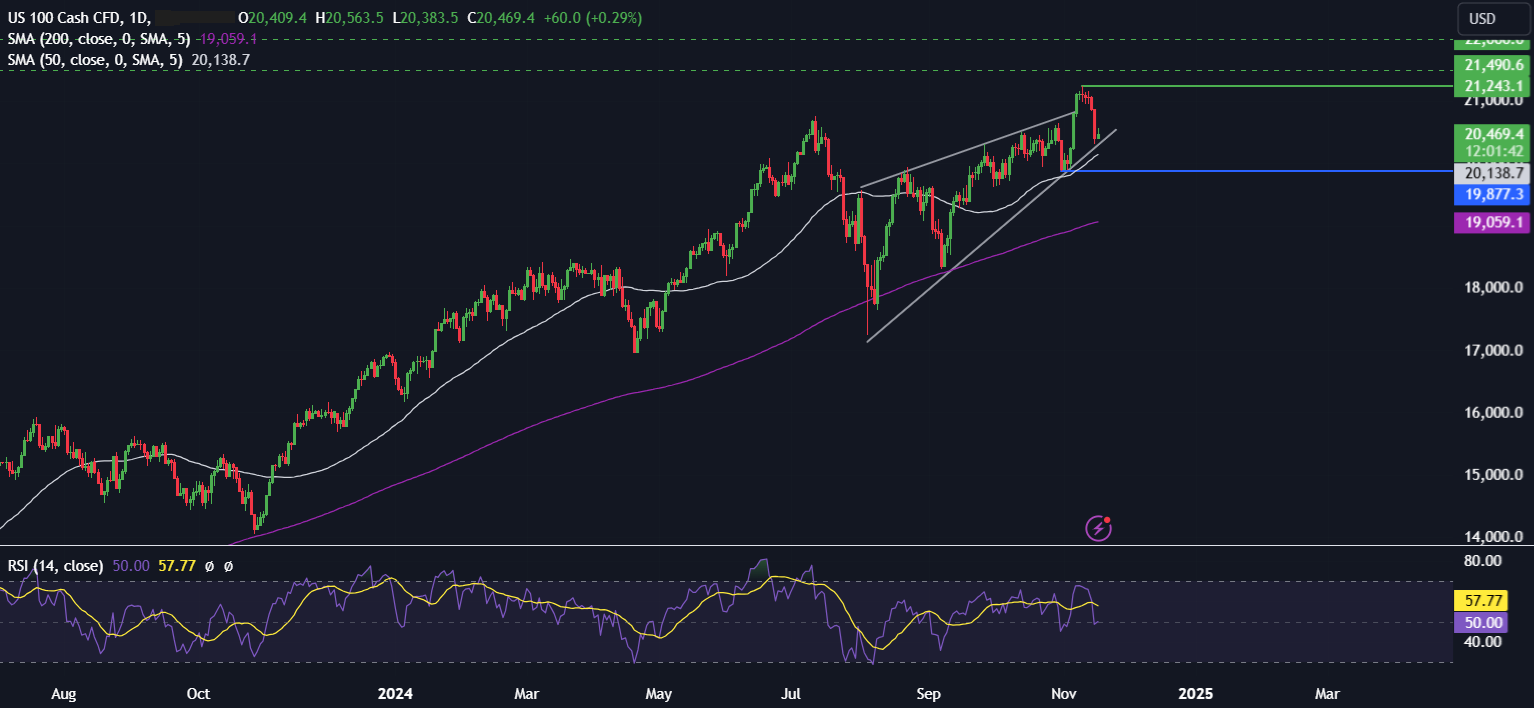
Meanwhile, the US dollar rallied to a yearly high on slower Fed rate cut bets. EUR/USD was a notable underperformer, dropping to a 2024 low below 10550.
The stronger USD also resulted in Gold falling almost 5% in its worst weekly performance in 3 years. Gold process have fallen 7% so far in November.
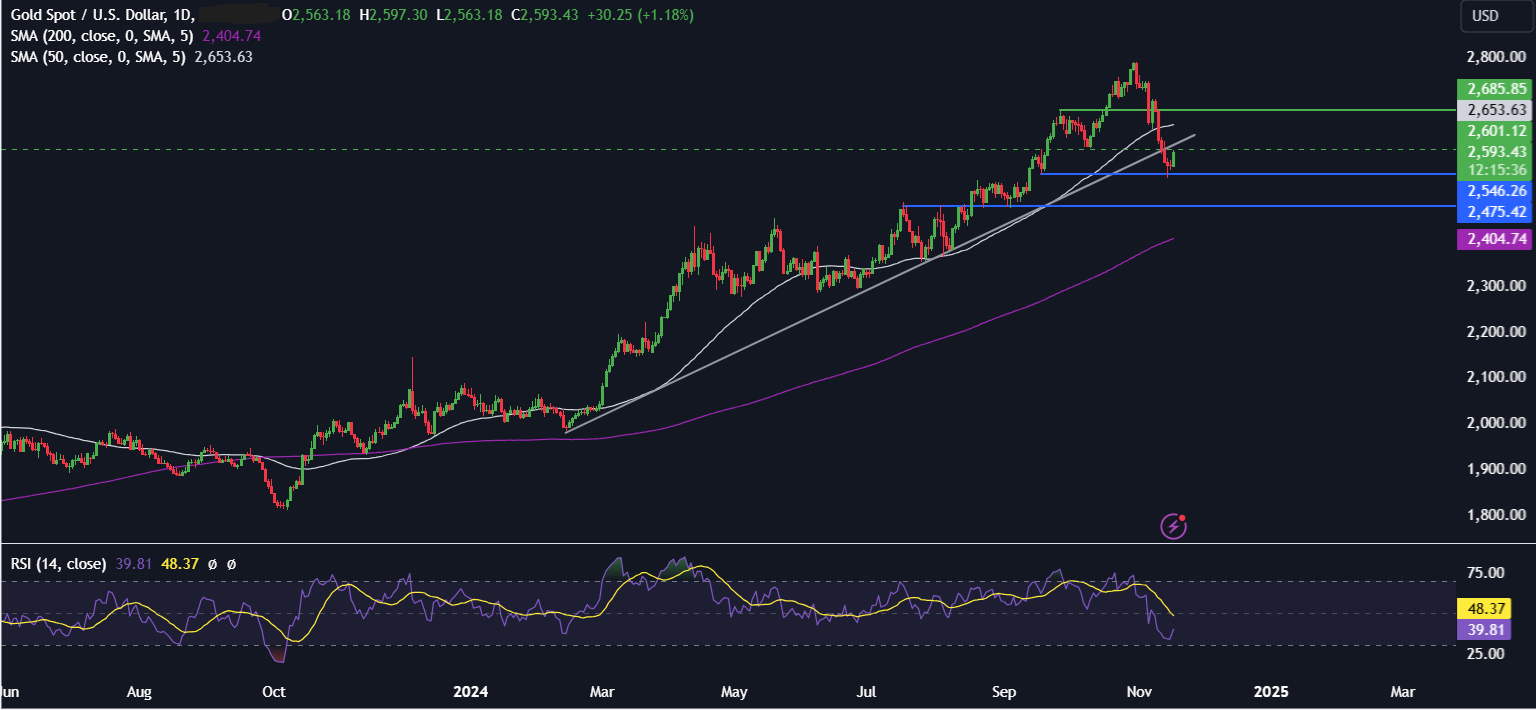
BoJ Ueda speech & Japan CPI
The Bank of Japan governor Ueda will speak on several occasions across this way, including on Monday and again on Thursday. His comments will be watched closely as the market continues to gauge when the central bank will raise interest rates again and is pricing in a 54% chance of a hike in December. Ueda’s speech comes as the market remains on guard following several warnings from Japan’s finance minister over a possible intervention in the case of excessive currency moves. Japanese inflation data is due on Friday. Economists expect inflation to soften from 2.1% in September to 2% in October. Holding above the BoJ target 2% level could be pivotal for supporting rate hike expectations. USD/JPY rose over 1.1% last week amid the stronger dollar as the market reined in Federal Reserve rate cut expectations.
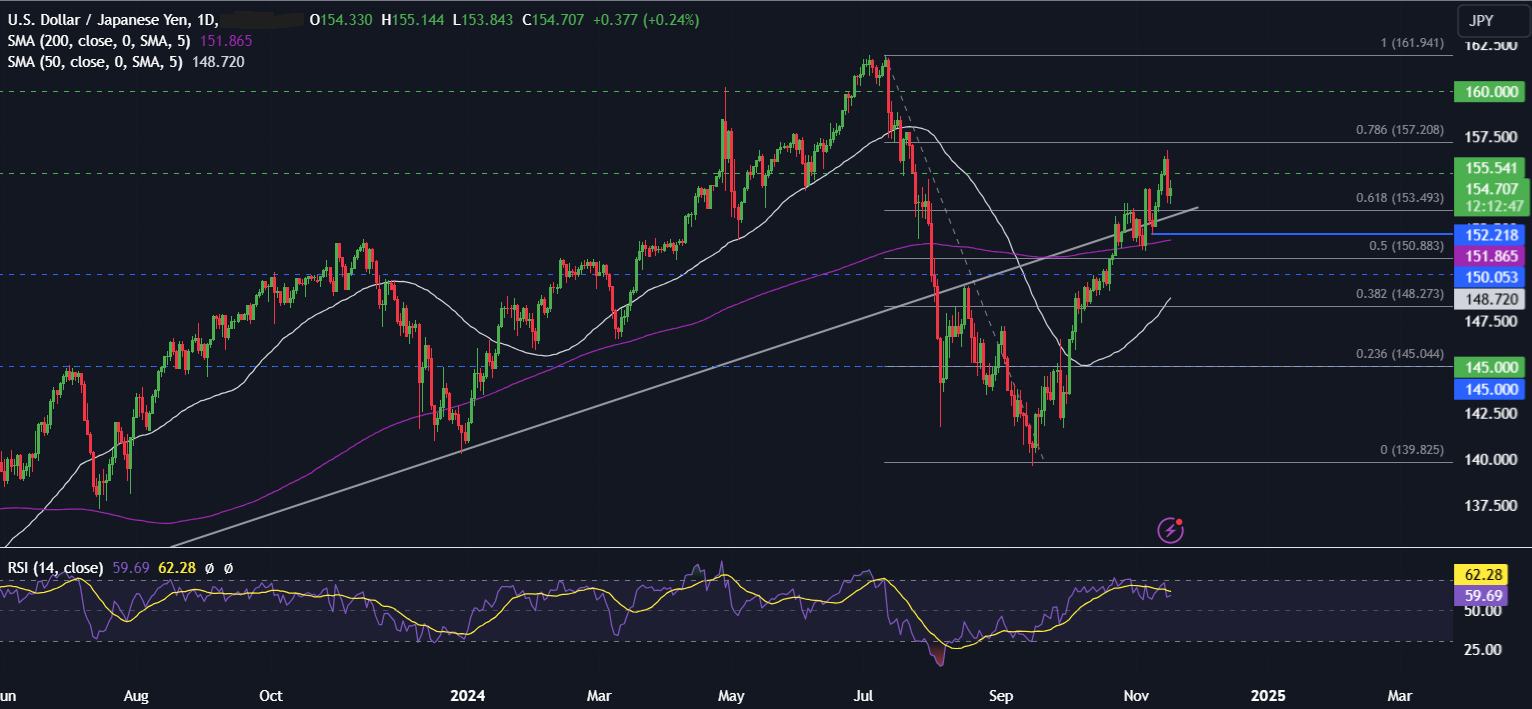
Canada CPI (Tuesday)
Canada’s inflation eased by more than expected to 1.6% YoY in September, prompting the Bank of Canada to cut interest rates by 50 basis points in the October meeting and marking the fourth straight rate cut. Price pressures and growth have fallen markedly in Canada in recent quarters as unemployment remains high and as the economy struggles under a restrictive monetary policy stance. Should Canadian inflation cool further, this could fuel expectations of another 50 basis point rate cut by the central bank before the end of the year, pulling CAD lower.
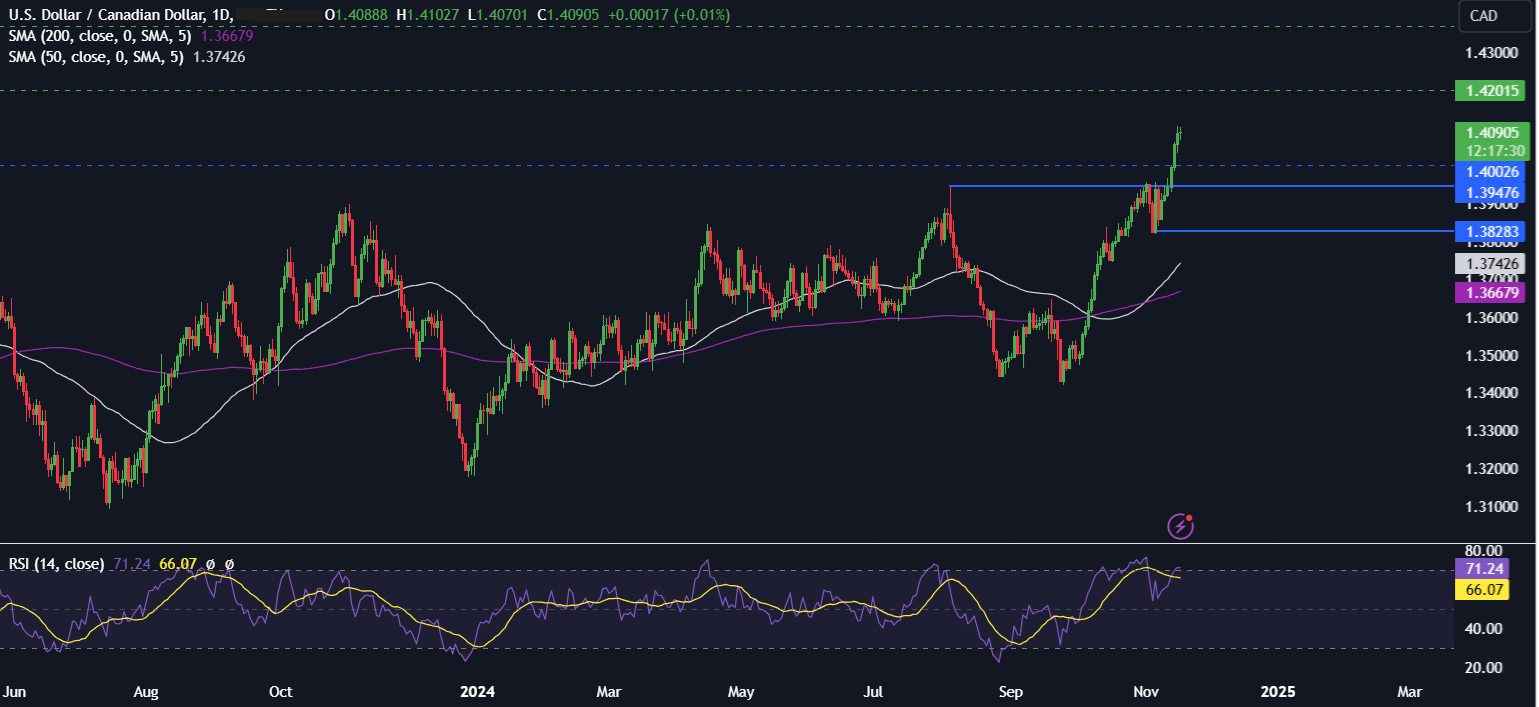
RBA minutes (Tuesday)
The minutes of the latest RBA meeting will be scrutinized for commentary regarding potential policy next steps. At the meeting, the RBA left interest rates on hold and did not actively consider either a rate hike or cut; instead, policymakers opted to keep the cash rate unchanged for an eighth straight meeting, as economists had forecast. The post-meeting rhetoric gave little fresh insight and reiterated that the board would continue to rely upon data while also noting that inflation remained too high. Inflation is expected to return to the midpoint target in 2026. In its statement on monetary policy, the RBA lowered its GDP, household consumption, CPI, and core inflation forecasts. There were no discussions on specific scenarios for rate changes. Hawkish minutes could help AUD/USD recover some of last week’s losses.
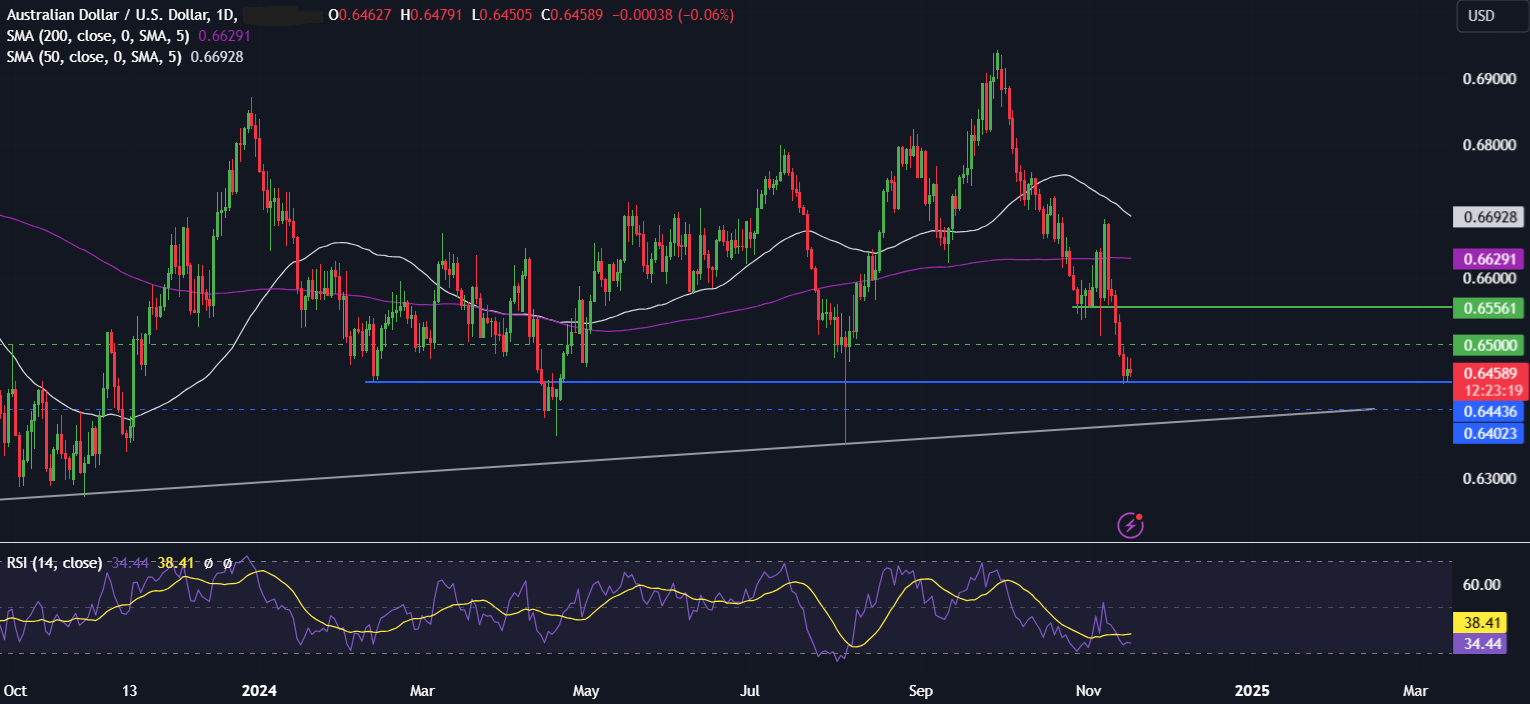
UK CPI (Wednesday)
UK inflation data will be released on Wednesday, and the market will watch to see whether consumer price growth slows further after easing to 1.7% in September, falling below the central bank’s 2% target for the first time in three years. The data comes after figures last week showed that the UK economy grew at a slower pace of just 0.1% in Q3, and wage growth eased to its lowest level in two years but still remained too sticky for some policymakers to be comfortable to continue cutting rates. Signs that inflation remains below the central bank’s 2% target could keep pressure on sterling. However, the central bank has said that they expect inflation to rise towards the end of the year owing to a tick-up in energy prices. The data comes as GBP/USD trades at its lowest level since July.
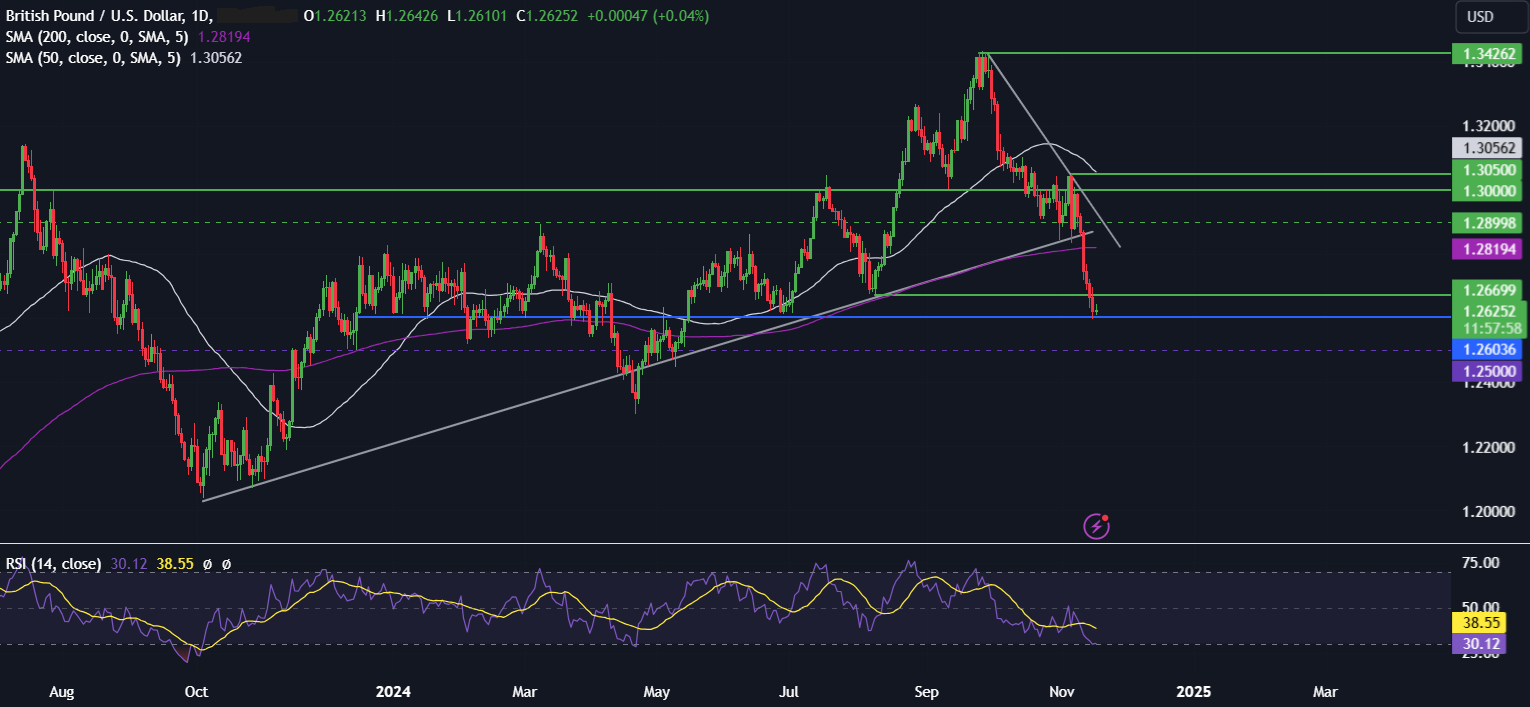
Eurozone PMI (Friday)
November’s PMIs will be one of the first major data points from the bloc following President-elect Trump’s victory in the US election. Last week, the ZEW economic sentiment survey for the region came in short of expectations due to rising concerns over Trump’s victory and possible trade tariffs and the collapse of the German coalition government. Expectations are for the manufacturing print to remain at 46 while services activity is seen slipping to 51.5, down from 51.6. This would push the composite PMI, which is considered a good gauge for business activity, back into contraction at 49.9, down from 50. However, this could be offset by some by boosting orders and stockpiling ahead of potential tariffs. Stronger-than-expected data could cause EUR/USD to recover after steep losses last week.
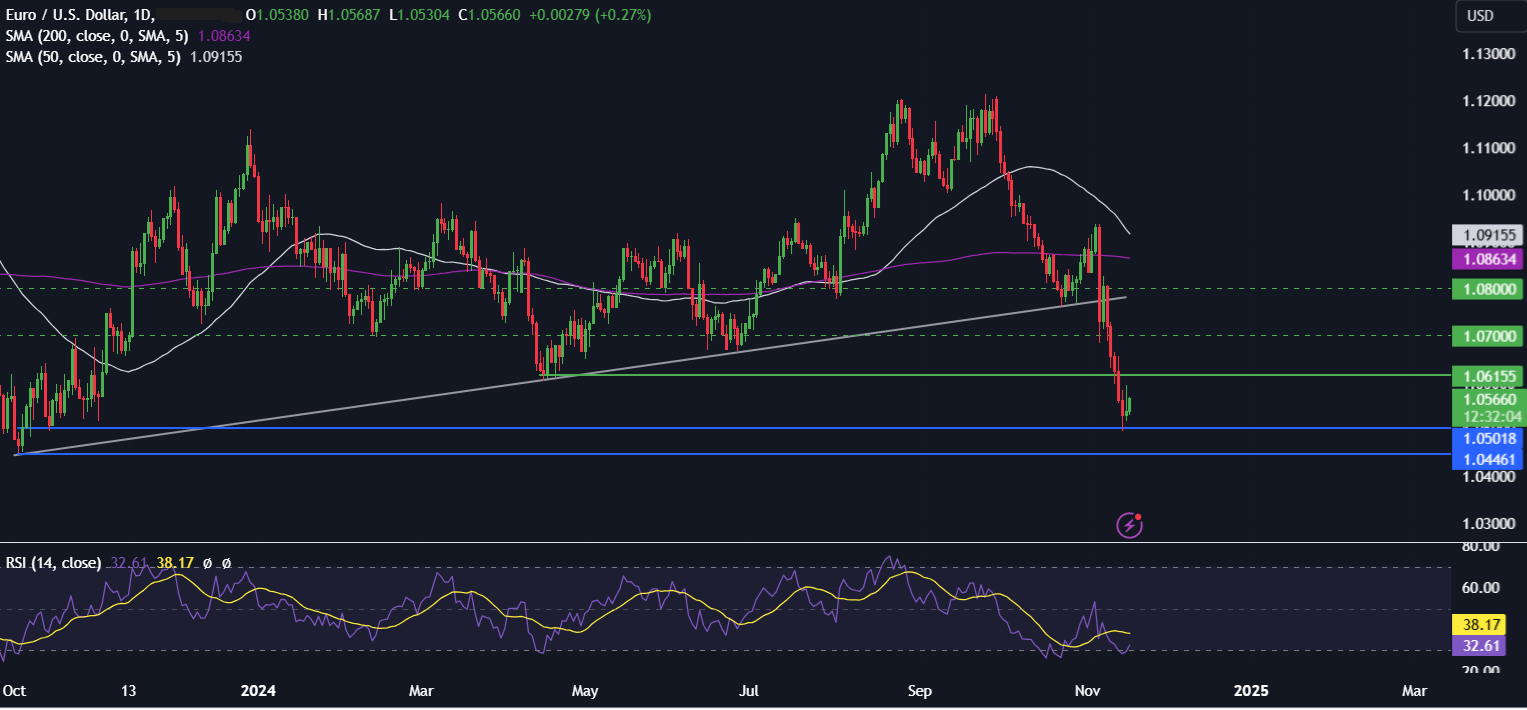
Nvidia earnings
Nvidia’s Q3 earnings will be reported on November 20 after the market close and will be a litmus test for the AI trade, which has helped US stock indices chart record highs this year. Wall Street expects EPS of $0.74 on revenue of $32.5 billion in Q3.
Attention will be on its data centre segment, which accounts for almost 90% of total revenue and has been showing huge strength and is expected to continue doing so. Any comments from CEO Huang on the latest Blackwell chip could also impact Nvidia and the broader market.
Nvidia often experiences big moves on the day of its earnings, which can also affect the NASDAQ 100 and the S&P 500.
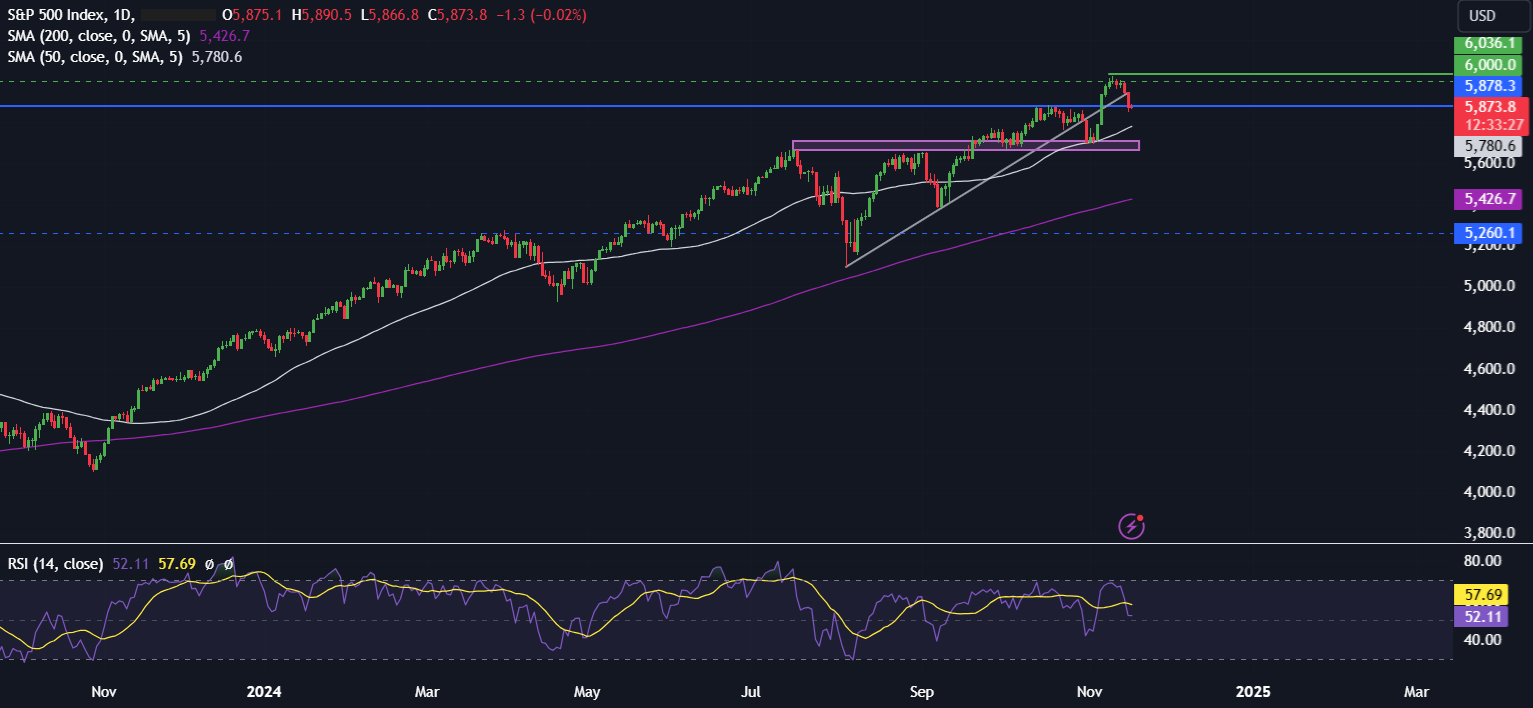
The content provided here is for informational purposes only. It is not intended as personal investment advice and does not constitute a solicitation or invitation to engage in any financial transactions, investments, or related activities. Past performance is not a reliable indicator of future results.
The financial products offered by the Company are complex and come with a high risk of losing money rapidly due to leverage. These products may not be suitable for all investors. Before engaging, you should consider whether you understand how these leveraged products work and whether you can afford the high risk of losing your money.
The Company does not accept clients from the Restricted Jurisdictions as indicated in our website/ T&C. Some services or products may not be available in your jurisdiction.
The applicable legal entity and its respective products and services depend on the client’s country of residence and the entity with which the client has established a contractual relationship during registration.




